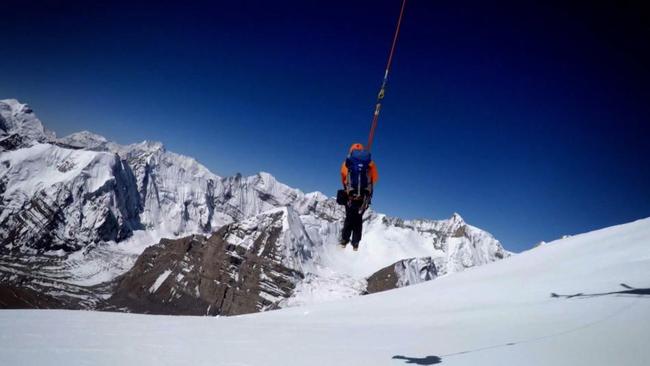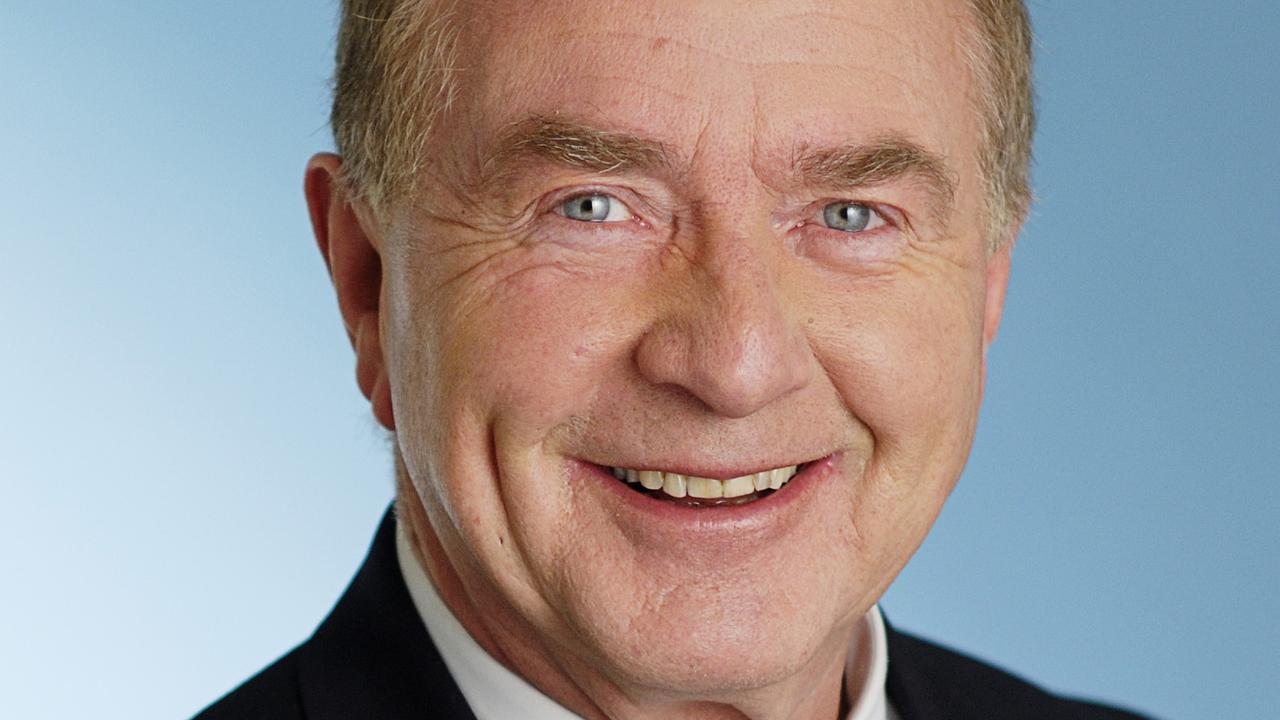The elite pilot who risks his life to save others in Everest’s death zone
JASON Laing has saved dozens of people from certain death. If he can’t get you out of one of the world’s most dangerous spots, no one can.
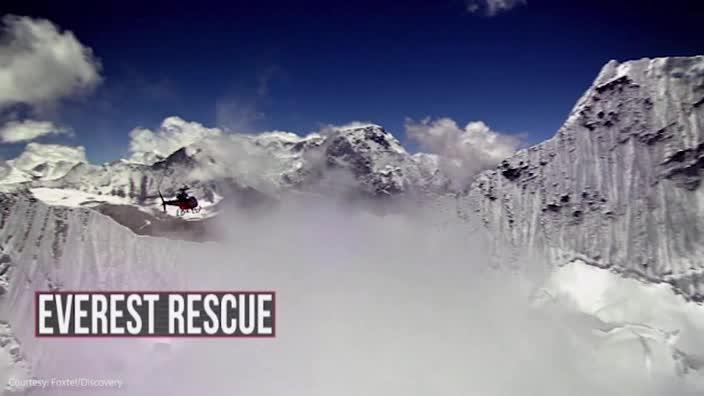
IN 2015, he pulled more than 140 people off Mount Everest in 2015 after an earthquake killed 9000 Nepalese and an avalanche that took 22 climbers and Sherpas’ lives.
In 2014, the elite rescue helicopter pilot pushed his chopper to its limits to recover the bodies of 16 Sherpa after an ice fall on the world’s highest mountain.
They’re scenes Jason Laing doesn’t like to dwell on: devastated, remote villages where the body counts topped 400, Mount Everest base camp flattened by the force of nature; the Sherpas he knew, the climbers he had socialised with; the friends who risked the dangers of the Himalayas and lost.
“The days after the [2015] earthquake were so challenging,” says the 48-year-old Kiwi, who as well as being at the very top of an elite group of pilots flying the most dangerous high altitude rescues in the world, is the master of understatement.
“The whole country was devastated. It’s something I’ll never forget.”
He finds it difficult to articulate the emotional toll.
“It’s hard at times,” he says. “When they sent me to Everest region in the wake of the earthquake and avalanche, I did the thing that my skills enabled me to do.
“And then after all the major high altitude rescue stuff was completed, they switched me out with another pilot, to take a breath.”
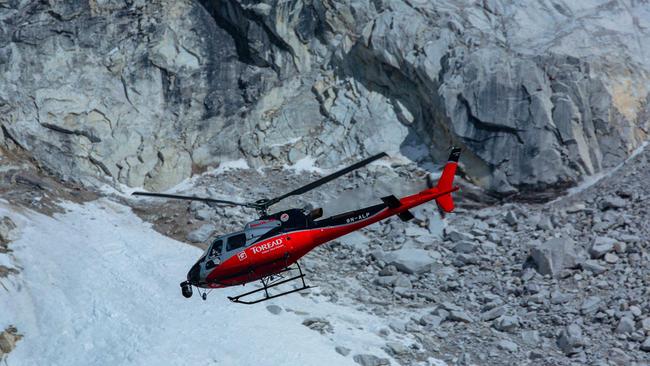
That “thing” Laing’s skills enabled him to do was to pluck climbers and Sherpas from the highest altitudes on the planet. Without him, they would have died, stranded.
Some were injured, some had been in the death zone. There was no way down: their passage cut by a series of avalanches, even if they could have walked.
HIGH ALTITUDE, HIGH STAKES
Laing, 48, is a man at the very top of his game. The Kiwi and his colleagues are the centre of a new TV series showcasing their work in the area known as the roof of the world.
Everest Rescue follows a group of helicopter pilots as they execute emergency missions for climbers on Everest’s south side and people living in nearby villages.
It’s high stress, requires a cool head, a wealth of experience, a taste for adventure and, in the end, the ability to put the temptation for “one last reccie” aside.
Climbers flock to Everest every year in their hundreds in climbing season — April and May — to take on a mountain with deadly credentials evidenced by the bodies that lie on its slopes.
Get into trouble up there, and if you’re lucky, Laing may be your last hope.
His credentials are impeccable and was awarded Helicopter Association International’s Pilot of The Year 2016 for his rescue and recovery efforts following the 2014 Nepalese icefalls and the 2015 Nepalese earthquake.
His memory of the 2015 earthquake is of a country, not just Mount Everest, devastated.
“I was at the Australian Embassy — it was Anzac Day,” he remembers.
“Just after that the earthquake hit. I was airborne within 90 minutes and flew across the villages devastated with 400 to 500 people had been killed. Whole villages just ... gone.
“The day after that I ended up in the Everest region and I was heavily involved in co-ordinating and bringing out probably 140 people out of Camp 1 and Camp 2 down to Base Camp, which was also devastated.”
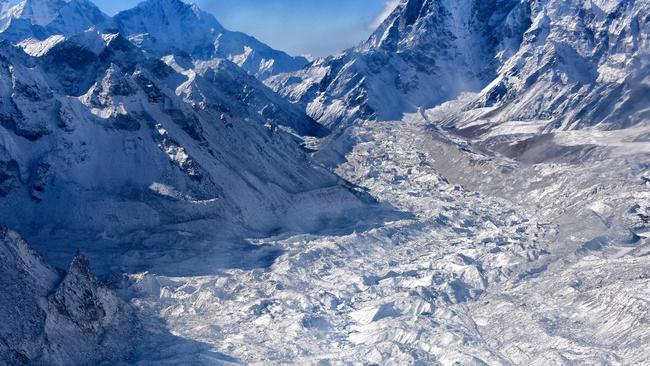
He wasn’t one for taking accolades.
When he finished the air rescues, he retreated for a few days to Lukla, the tiny town whose short, steep airstrip, known as the most dangerous in the world, is Everest’s closest airstrip, to help the community which is his work base.
“I stayed about four days. I know a lot of people in that valley and they were coming down from expeditions, I helped out in Lukla. That’s how I got through,” he says.
THE LIMITS
Experienced mountaineers know climbing Everest is perhaps the least of it. Getting back down safely is the hard part.
In the high altitudes and the death zone, life can’t be sustained. There’s not enough oxygen. Every minute spent there, the body is dying.
The longer spent in the mountain’s death zone, the more likely climbers are to fall victim to altitude sickness.
It’s the mountain’s biggest killer.
And its sufferers make up the bulk of the rescue pilots’ business.
HAPE (high altitude pulmonary oedema) will flood your lungs. HACE (high altitude cerebral oedema) will flood your brain. If you don’t get down in time, you die.
High altitude pilots face a similar scenario.
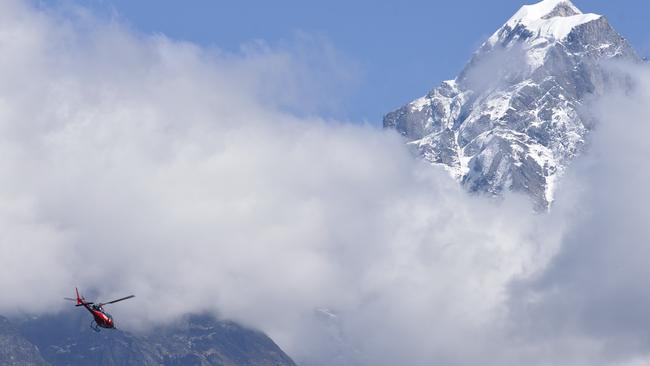
Just because you can fly high doesn’t mean you can land.
The chopper’s flight limit is 23,000 feet. Go higher, and your helicopter loses power. It can’t lift. It can’t take off. It falls out of the air.
Everest’s summit is 29,000 feet. Camp 2 sits at 21,000 feet. Camps 3 and 4 are above it: out of reach.
And just because you can fly to 23,000 feet doesn’t mean you can land, takeoff, or not come unstuck.
“We have limits for the performance of the helicopter,” says Laing. “Basically it gets to a point where the air is too thin.
“The higher you go the less power you have and there’s a point where something has to give and the chopper can’t sustain flight.”
Throw in the vagaries of weather, cloud, fog, weight, wind and a thousand other things, and it’s the riskiest place to fly in the world.
“We wear oxygen, we run into problems with language difficulties, disoriented people, weather. there are a lot of variables,” Laing says.
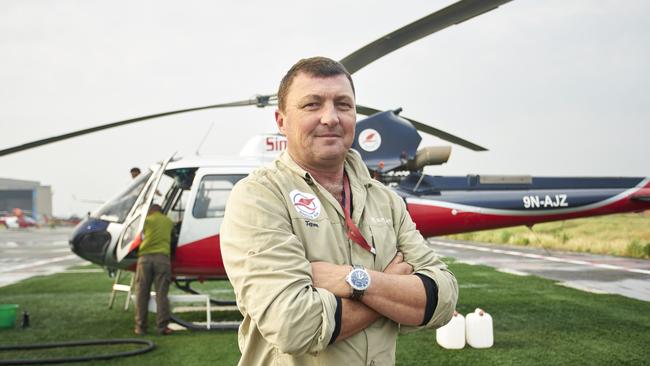
‘YOU CAN ALWAYS SAY “NO”’
“You do learn to go with the flow. There is a lot of self-management.
“You have to be good at that. You have to stand back sometimes and take a breath and work out
the situation. You always go and have a reccie. You can always say ‘no’.”
He’s known as one of the best longline rescue pilots in the business, but Laing won’t attempt a rescue unless his crewman, Chhiring Bhote, is happy. The Sherpa, 23, is specially trained in longline rescue work.
“I can put him down on really steep terrain at about 22,000 ft, without oxygen,” says Laing.
“So he’s got to be happy about where we’re going and what he’s going to have to do.”
In 2014, Laing put him into a crevasse to get a climber who’d been hanging onto his climbing ropes all night. “I lowered him down on a 200 ft long line. It was probably the hardest long line job I’ve ever done.”
Minimising risk always outweighs reward.
“Usually, you’re told something can’t be done because of the weather. But you go and have a look, and sometimes the weather clears a little and you can do something” Laing says.
“And sometimes. you can’t. “There is a temptation to have one last look. But you have to be disciplined.”
Early in the TV series, he’s forced to make one such call.
A climber, near death from altitude sickness, is dragged down to Everest’s Camp 2 in the hope he can be choppered out before he dies.
Laing can’t land: outgunned by encroaching nightfall, winds, weather and clouds he returns to Lukla, forced to abandon the mission for the night.
He can only hope he will still be doing a rescue when dawn breaks, “not a body retrieval”.
“Sometimes we can be too late,” he says.
“But it’s a rescue situation and you are no good to anyone if you kill yourself and your crew.
“I’ve had a lot of close calls. But it’s all about decision making.
“There has been some hair rising stuff. and the pressure to fly the rescue mission can be enormous, particularly from fellow climbers.
“People say the jobs is dangerous but I don’t want to push it and make wrong decisions.
“I have a family. And I plan to come home every day.”
Everest Rescue starts on Foxtel’s Discovery Channel on February 21
